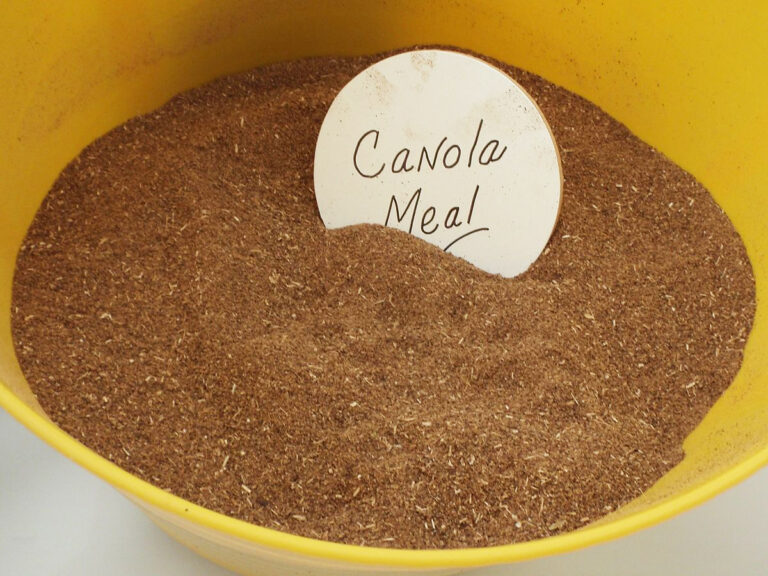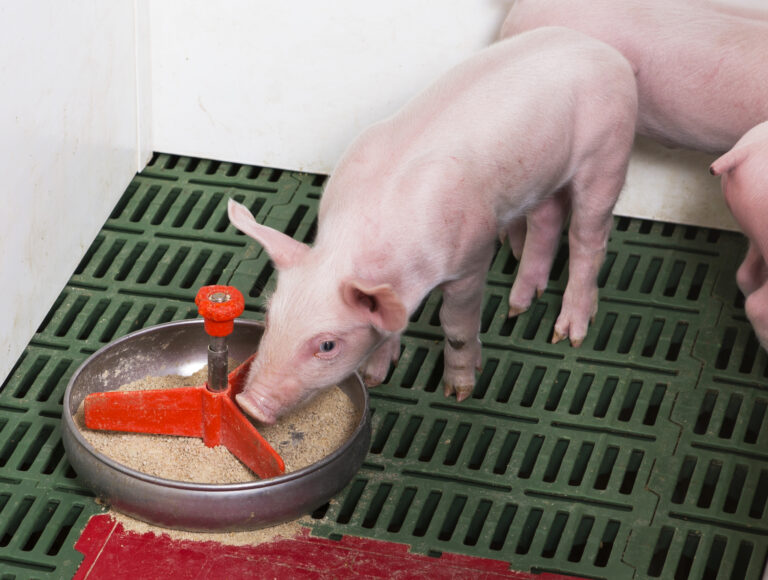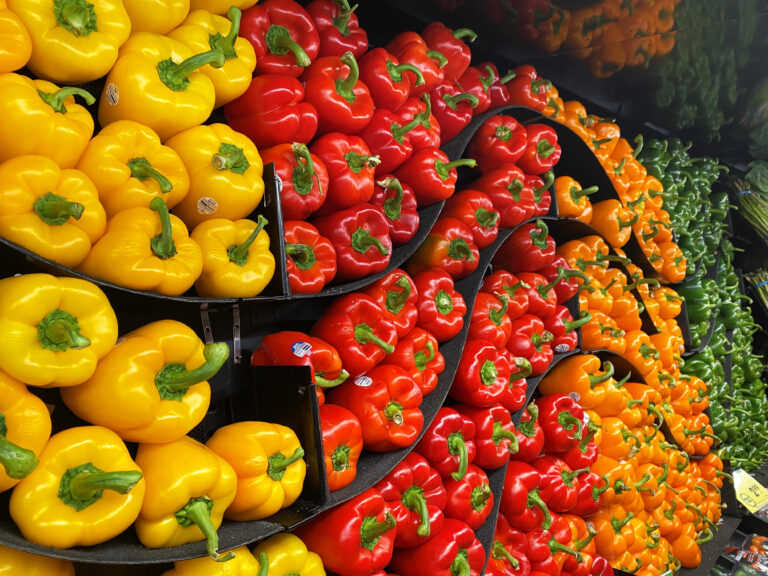
Pork Commentary, December 13th, 2021
Jim Long, President-CEO, Genesus Inc.
The USDA reported 6% less pigs in U.S. inventory under 120 lbs. on September 1st count. Those are the pigs that are going to market now 100 days later. Last week the U.S. marketed 2,601,000 hogs; a year ago 2,755,000; down 5.6%. Seems USDA report of significantly fewer hogs is accurate. Week upon week of around 6% fewer hogs will be supportive to hog market as total pork tonnage decreases into a strong domestic market and record exports to Mexico.
The U.S. sow herd declined around 300,000 sows in the Covid debacle of 2020. Now there are less hogs and it doesn’t take an ag economist to calculate the reason. Less sows, less pigs.
In our opinion, there is little activity to grow the current sow herd. If anything, it’s some existing sow units that are empty and now being restarted. There is very minimal new sow barn construction. We don’t believe there has ever been much sow herd expansion during what would be termed high feed prices such as we have now. All of this compounded by the added fact, at current feed prices and current hog prices many are losing money, trading dollars at best.
Lean Hog Futures
The Chicago Lean Hog Futures Casino was in full evidence the past week. I.E. June Lean Hog Futures December 2nd $97.050, December 8th $92.950, December 10th $97.175. Up and down like a toilet seat. Not sure what made all the gyration other than money in and money out. Our thoughts, less hogs are here and will be in 2022. If we had $1.20 in 2021, not really hard for us to believe that we’ll be reached or surpassed in 2022 with even fewer hogs.
2022 – Sow Liquidation Convergent
We are staying with our premise that the three largest production areas in the world: North America, China, and the European Union with over 75% of the world’s pigs will be down in production in 2022.
There is liquidation in China. Latest official report from China was sow herd reduction of 1.2 million sows in the month of October. That’s Canada’s sow herd gone in 30 days. China’s hog prices have rebounded nicely from early October lows (11.5 RMB to 18.2 RMB kg). A jump of over $100 per head reflecting already lower hog numbers. China will be down 15-20% in pork production in 2022 vs 2021. Equivalent to over 100 million fewer market hogs.
European Union liquidation continues and official count December to June was near 250,000 fewer sows. Since June liquidation has accelerated as market prices went down and feed prices went up.
All in all, if correct this convergence of lower numbers could push hog prices to record highs.
CFAP 1 Top Up
Some members of Congress are fighting for pork producers to get the payments promised by the Secretary of Agriculture, Vilsack. Below is a recent letter sent by Vicky Hartzler, Member of Congress from Missouri to Secretary Vilsack.Thanks to a Missouri reader of our commentary for reaching out with this.
December 6, 2021
The Honorable Tom Vilsack
Secretary
U.S. Department of Agriculture
1400 Independence Avenue SW
Washington, DC 20250
Dear Secretary Vilsack,
I commend the United States Department of Agriculture (USDA) for their recent
announcement issuing $270 million to eligible livestock contract growers who applied for pandemic assistance through the Coronavirus Food Assistance Program (CFAP 2) payments.
Despite this critical investment, I am concerned that United States pork producers, who are not contract growers, are continuing to experience ongoing financial burdens as a result of COVID-19 market disruptions. As you know, on January 15, 2021, USDA announced that eligible swine producers would receive additional assistance through a “top up” payment of $17 per head, increasing the total CFAP 1 inventory payment to $34 per head. However, since then, USDA has given no indication of when and how they will distribute the “top up” payment saying they want to “re-evaluate the program.” On July 13, 2021, USDA announced that up to $50 million in pandemic assistance funds would be provided to small hog producers who use the spot market or negotiated price. We have yet to see how these funds will be distributed as well. Pork producers are still feeling the economic hardships of the pandemic and look forward to USDA carrying out these programs.
On October 7, 2021, you testified before the House Agriculture Committee on the state of the livestock industry. In response, I submitted the following question for the record on October 15, 2021:
“Secretary Vilsack, for several months now USDA has held pork producers in the balance as they await a formerly promised “top-up” payment of $17 per head. Members and staff have requested additional information several times and to my knowledge, not received a clear answer. Can you please provide a specific update as to the status of these payments and details as to when U.S. swine producers will receive formal notice regarding this payment?”
As of December 2, 2021, this question for the record has still not been answered. With this in mind, I respectfully request answers to the following questions:
- When will USDA release guidance on how U.S. hog farmers can receive their promised “top up” payment of $17 per head as well as the $50 million for small hog producers?
- What modifications is USDA making to the “top-up” program as announced by the Trump Administration and what are these changes designed to accomplish?
- Hog farmers often cap out of the $250,000 payment limit quickly due to their higher volume of livestock. Will a new payment limit be issued for swine producers to better ensure producers receive adequate financial assistance?
I encourage USDA to support our hardworking farmers and provide them with the much-needed financial relief that was promised. I thank you for your timely consideration of this matter and look forward to working with you on this important issue.
Sincerely,
Vicky HartzlerMember of Congress
Now we have new NPPC CEO Osborne, let’s hope we see coordinated effort to get what is promised by Secretary Vilsack. Dairy, Beef, Corn, Soybeans etc. have gotten billions in CFAP 1 top up. Why hasn’t hogs promise been met? We implore the NPPC to fight for the 60,000 American hog producers they represent. Why are we being treated as second class farmers by the USDA administration? If you want CFAP 1 top up as producers, continue to contact your Senators, Congress, NPPC etc. It’s been promised. Hog farmers were hit hard by Covid just like other ag commodities, they were paid the CFAP 1 top up. A promise made should be a promise kept





















Random Swine Observations
Pork Commentary, December 20th, 2021
Jim Long, President-CEO, Genesus Inc.
Last week’s U.S. slaughter was 2,645,000, a year ago 2.8 million. Down 5.8% in line with USDA projection of 6% fewer hogs.
Weights lower than a year ago. Weights declined 1.4 lbs from week before. This indicates to us market hog inventory is current to a year ago. The decline in hog slaughter year over year has nothing to do with backed-up hogs. The decrease in production is due to 300,000 fewer sows.
It’s just not lower sow numbers that are cutting pig production numbers:
Packers are being challenged by lack of labor. Generally, they can get all the hogs killed but the cutting–processing that creates added value is being shorted. Saw a billboard in Indiana where a Packer was offering $34.43 per hour for maintenance workers. All these labor issues will lead to more automation. The challenge, finding skilled people to maintain the automation.
The lack of labor to added value to pork filters down to producers. Generally, more Packers have the more can slide down to producers. The Bigger the Pie the better chance for a bigger slice.
China produced a record grain harvest this year 682.9 million metric tonnes (27 billion bushels approximately), up 13.4 million metric tonnes. If we and the USDA are correct, that China will be down in pig production (USDA 14%; us 20%) in 2022. You would wonder how much corn they will need imported with 100 million less hogs. You would think China will find its own grain before they import.
China planted 117.6 million hectares (258 million acres) of grain, up .7%. Corn production was 272.6 million metric tonnes (10.74 billion bushels). Domestic corn in China is running between $10.50 to $11.00 US a bushel (2650 RMB/tonne). This contributes to China’s high cost of production for swine.
The National Slaughter Price in China last week was 16.83 RMB/kg ($1.19 U.S. lb.). China breakeven is estimated to be 21 RMB/kg ($1.53 U.S. lb.). The difference of 5 RMB/kg is a loss of 30¢ U.S.per lb. or about $60 – 75 per head. Sow herd liquidation continues in China. There will always be liquidation when producers lose money.
U.S. Chicken prices are quite strong. A year ago, U.S. weekly composite price 81.78¢ lb. last week $1.24 lb. A huge jump. This with slaughter numbers similar to a year ago. Higher Chicken prices should support higher hog prices. Pilgrim Pride had two chicken hatcheries heavily damaged in the Kentucky Tornados. Pilgrims has over 37 hatcheries in USA.
Summary
We stay with our position that continual liquidation of the breeding herds in China and the European Union along with already lower U.S. hog numbers will lead to significantly less hogs produced in 2022 than 2021 in these three regions which account for over 75% of the world’s hog production. This will lead to hog prices higher in all global markets. We believe U.S. lean hogs will reach and surpass 2021 prices.
Merry Christmas
My Father used to say “Don’t worry, Christmas will be here on the same day.” Never was sure what he meant by that saying. He passed away 21 years ago but the saying still resonates.
But as he predicted, Christmas will be here again on December 25th. This time of year, it makes you pause and ponder different points of life. This past week Spencer (one of my sons) and I travelled the eastern corn belt. Our visits almost exclusively were with families who are in pork production.
Today’s families are the survivors of the massive consolidation we have seen in pork production where some counties had over 100 farm families producing pork and now might have three. Producer families have survived and most cases prospered because of work ethic, courage, to compete passion, adaptation of technology, and family belief and togetherness. Indeed, we are proud of this industry.
To all, we wish you a Merry Christmas.